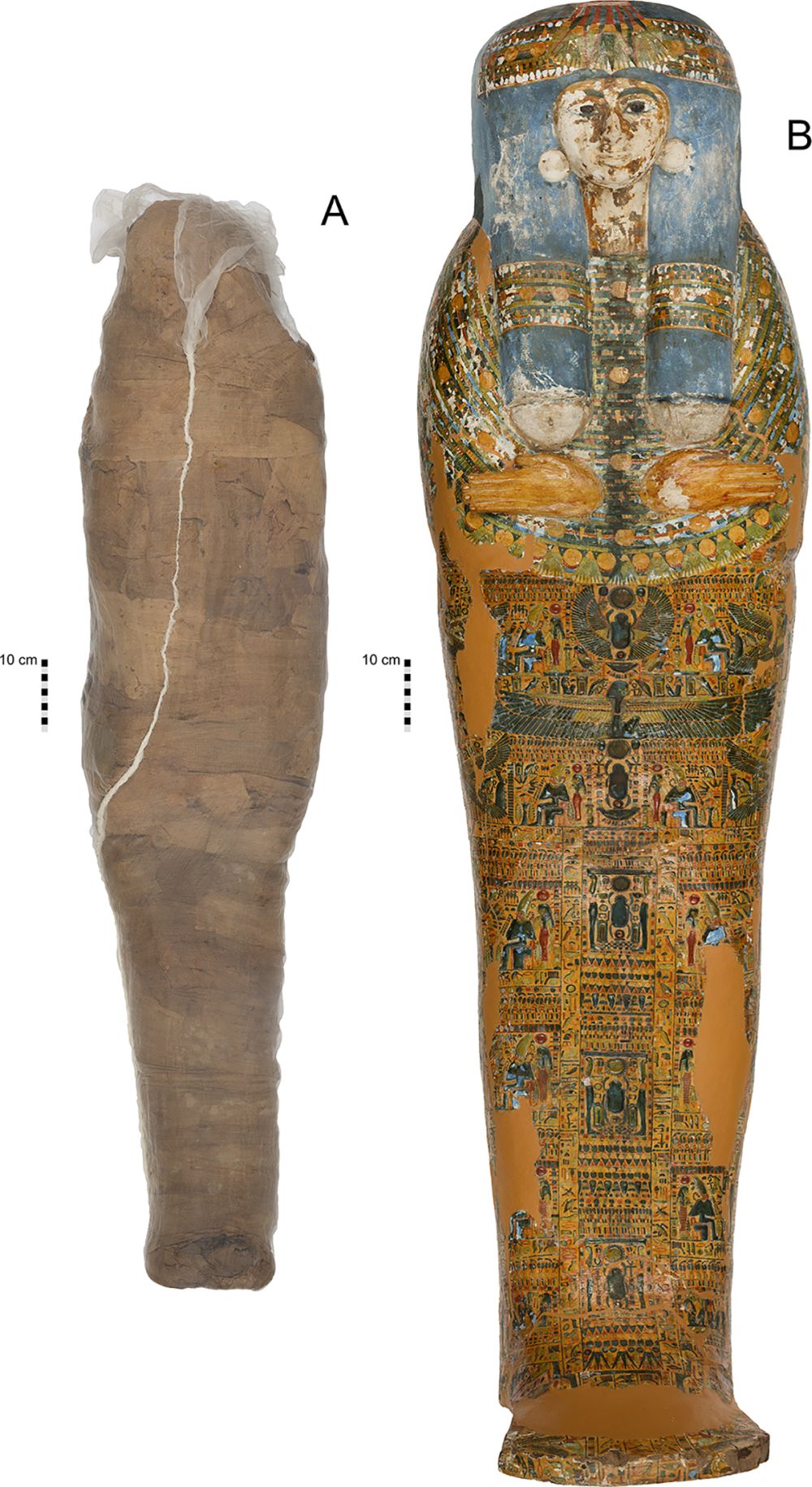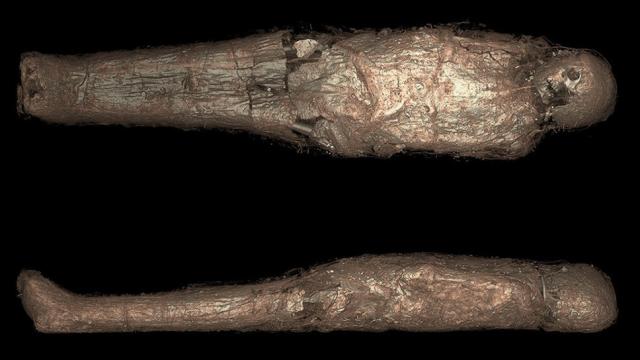The discovery of a hardened mud carapace wrapped around a 3,200-year-old mummy has brought a previously unknown ancient Egyptian burial practice to light.
The mud carapace — a shell-like casing — was identified on an Egyptian mummy kept at the Chau Chak Wing Museum at the University of Sydney in Australia. Carapaces on mummies have been documented before, but they’re made from resins or a combination of resins mixed with other substances, such as bitumen, explained Karin Sowada, the lead author of the new study and an archaeologist from Macquarie University, in an email. Her new paper, published today in PLOS One, describes the first known ancient Egyptian carapace made from mud.

“Our multi-disciplinary study thus provides new insights into this type of mummification procedure and expands our understanding of the ways ancient Egyptians treated their dead,” said Sowada. “Due to mud being a more affordable and readily available alternative to resin, it is suggested that this mummification technique is likely to have been more common than previously thought. Further investigation of other non-royal mummified individuals will reveal the extent to which this technique was practiced.”
This mummy has a bit of a weird backstory, resulting in a second important discovery. Australian politician and philanthropist Charles Nicholson purchased the mummy in the mid 1850s and donated it to the University of Sydney in 1860. Inscriptions and symbols on the coffin suggested the name “Meruah” for the occupant and a burial date of around 1000 BCE. As it turns out, however, neither of these things are true, as the body doesn’t actually belong to the coffin, according to the new research.
In 1999, scientists used CT scans to analyse the mummy, during which time they detected the carapace. A re-investigation of the mummy commenced in 2017 in preparation of the opening of the Chau Chak Wing Museum. Updated CT scans were made of the body, along with a new analysis of samples taken from the mummy, “allowing for a more detailed understanding of the carapace layer,” said Sowada.
Radiocarbon dating suggests the body, dated to the 12th century BCE (circa 1200 to 1113 BCE), is actually older than the coffin. A likely scenario is that 19th-century dealers put the mummy in some random coffin to make a complete set, and then sold it to Nicholson. The name “Meruah,” therefore, and a number of titles, including “Chantress of (the god) Amun,” are likely not accurate to this individual.

The new scans also confirmed the body as belonging to a woman who died between the ages of 26 and 35. The updated analysis shed new light onto the carapace, revealing it as a hardened shell wrapped around the body and packed within the linen wrappings. Aside from this, not much else is known about the woman, but the nature of her burial provides some clues.
“Given the overall quality of her mummification and the added expense of the carapace to restore the body at some later point, we can say that she was likely a person from a family of means,” explained Sowada. “However, the use of mud to make a carapace, rather than fine exported resin as can be seen with some mummified royal individuals of the period, suggests a more economic approach by those who carried out her post-mortem treatment.”
As the CT scans also showed, the body appears to have been damaged shortly after mummification, which likely prompted the mud-based covering.
“The circumstances of this damage are unknown,” said Sowada, who explained that “this mud shell, together with some rewrapping and packing of the body with linen, would have served to reform and protect the damaged body.”
[referenced id=”1123508″ url=”https://gizmodo.com.au/2018/08/ancient-egyptians-mastered-mummification-long-before-the-time-of-pharaohs/” thumb=”https://gizmodo.com.au/wp-content/uploads/2018/08/16/xxfxihydy1vlm4vk7bej-300×169.png” title=”Ancient Egyptians Mastered Mummification Long Before The Time Of Pharaohs” excerpt=”The earliest mummies are typically associated with the Old Kingdom of ancient Egypt, but as an intensive examination of a 5,600-year-old mummy confirms, the methods used for this iconic funeral practice date back to well before the age of pharaohs.”]
Indeed, this would’ve been very important to the ancient Egyptians, who associated the preservation of the deceased with their continued existence in the afterlife. And as Sowada pointed out, “mud itself was associated with the idea of regeneration and growth, so it would have been a symbolically significant material to use for this repair, as well as inexpensive.”
Meruah, or whatever her name is, is now on display at the Chau Chak Wing museum. Excitingly, visitors can view a 3D visualisation of the mummy, in which they can move through and investigate the different layers, including the mud carapace.
